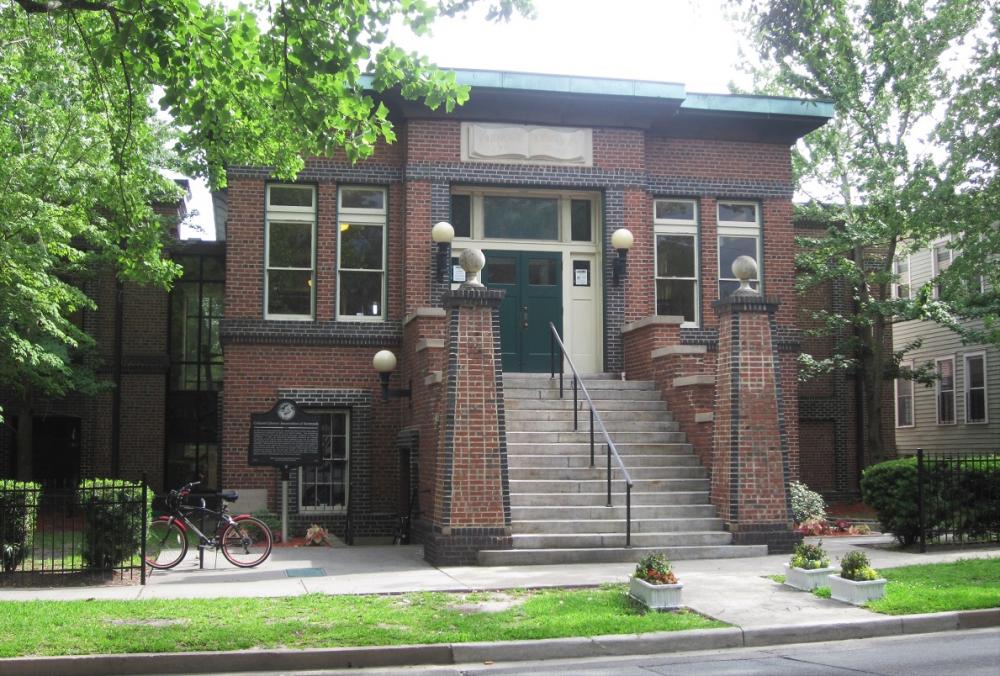The East Henry Street Carnegie Library is a branch of the Live Oak Public Libraries in Savannah, Georgia. It originally opened in 1914 as the Colored Carnegie Library, one of twelve segregated public libraries in the south funded by philanthropist Andrew Carnegie and one of the earliest African American public libraries in Georgia. It was added to the National Register of Historic Places in 1974. Though temporarily closed in the late 1990s, it reopened in 2006 after a major restoration and expansion project.
The opening of Savannah’s Colored Carnegie Library in 1914 was a major step for the city’s African American citizens in their progress toward free library services. Their quest had begun ten years before, when the city established its first public library but prevented blacks from using it. As a result, the Colored Library Association of Savannah formed in 1906 and operated the Savannah Colored Public Library out of a doctor’s office on Hartridge Street. The Association’s twelve founding members included many of black Savannah’s professional, business, and cultural leaders. Although the library received an annual appropriation from the city, most of its collections were donations. But in 1909, after Andrew Carnegie offered the city $60,000 (later raised to $75,000) for a new main library on Bull Street, the Colored Library Association was encouraged to approach the philanthropist themselves. In August 1910, Carnegie offered them $12,000 for a small library. Savannah’s population at the time was 65,064, just under half of which were black. The Association used community donations to purchase a library site on East Henry Street, across from Dixon Park. Architect Julian de Bruyn Kops designed the building and local contractor D.P. Phillips built it.
The Colored Carnegie Library opened on August 14, 1914. Its inaugural librarian was Charles A.R. McDowell. Though its opening day collections consisted of only 3,000 volumes, the library immediately became an indispensable community institution among Savannah’s African Americans. It provided them with reading materials by black and white authors, programs to attend, clubs to join, and space for public meetings. While the library received support from the city, it remained supervised by a separate board until 1963, when Savannah desegregated its libraries. The Carnegie Library reopened as an integrated branch of the Savannah Public Library but continued to serve a predominantly African American clientele.
Over the following decades, the Carnegie library on East Henry Street fell into disrepair. Changes to building codes, including new ADA compliance standards, outmoded the building. By 2000, it was temporarily closed. In 2001, the Live Oak Public Libraries began raising funds to restore and reopen the library. It officially reopened in 2006. The restoration project won numerous architectural and historic preservation awards, including the Marguerite Williams Award from the Georgia Trust for Historic Preservation as well as the National Preservation Award. An important part of Savannah’s African American history, the library’s former users include Savannah mayors Floyd Adams and Otis Johnson, former public school superintendent Virginia Edwards, Supreme Court Justice Clarence Thomas, and Pulitzer Prize winning author James Alan McPherson.


